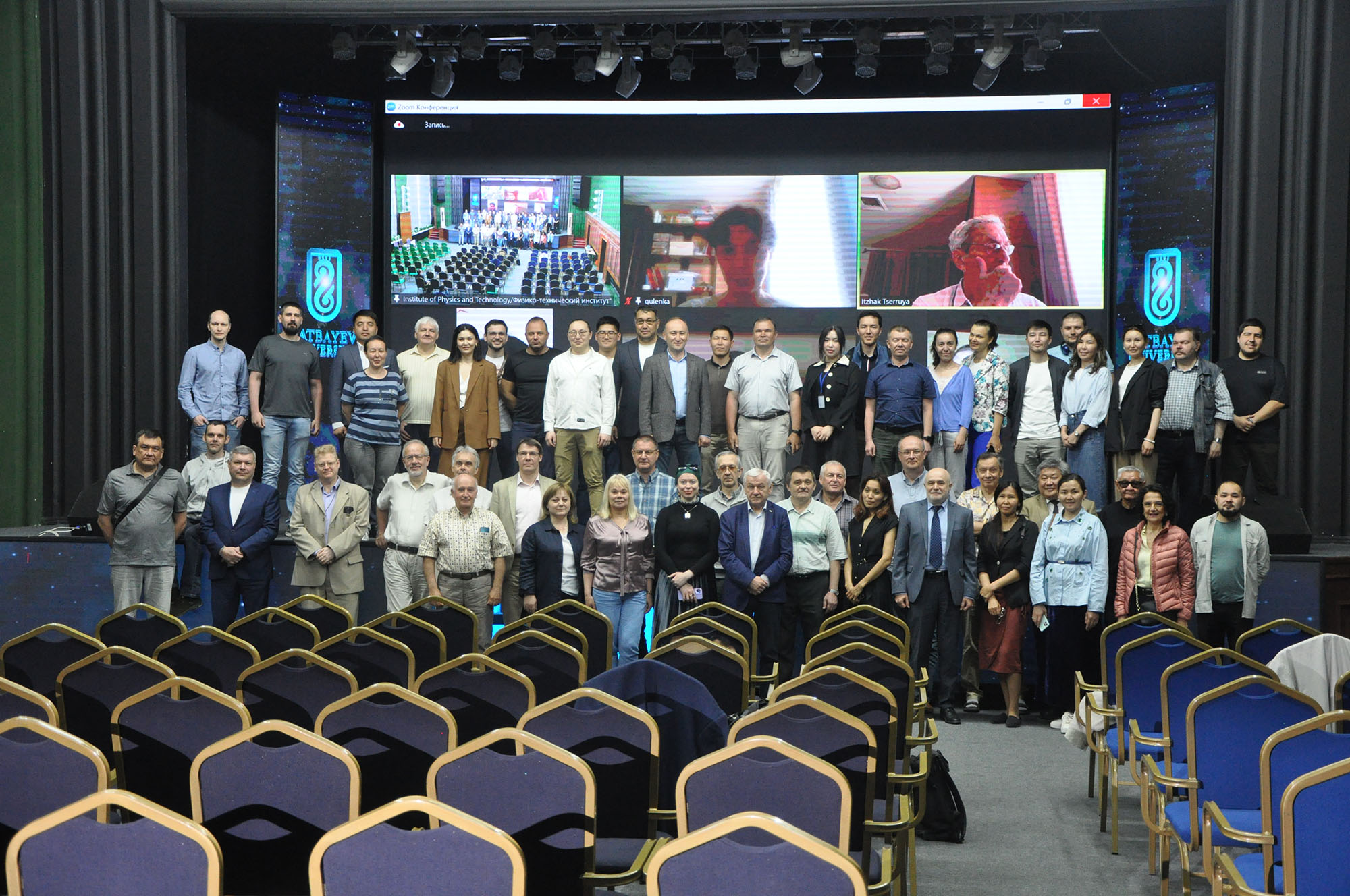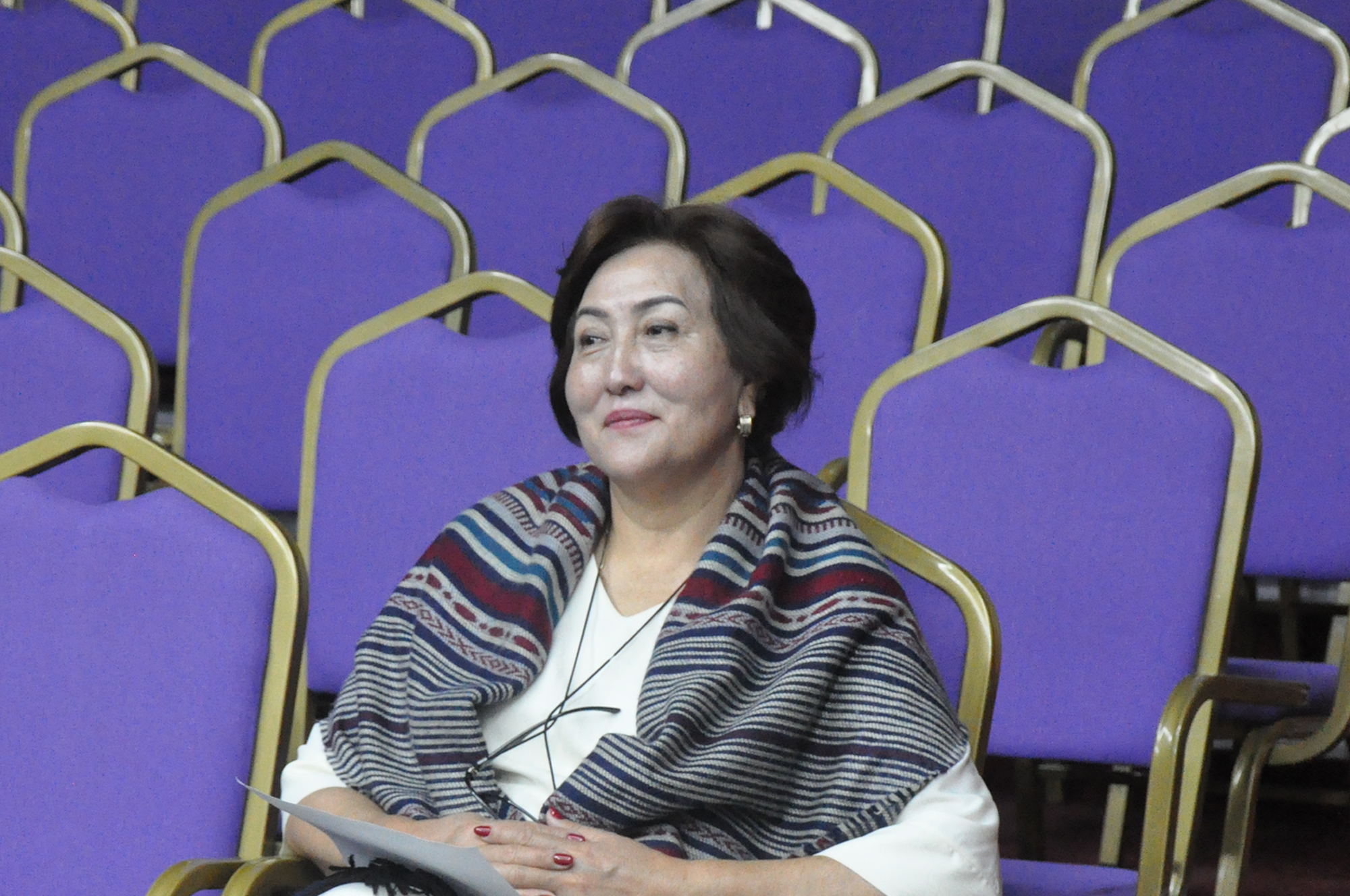NICA Days 2024 International Workshop finishes in Kazakhstan
News, 20 May 2024
On 17 May, Satbayev Kazakh National Research Technical University (Almaty) hosted the NICA Days 2024 International Workshop in a hybrid format. The event was organized by the Joint Institute for Nuclear Research and Satbayev University. Participants reviewed the status of the NICA Megascience Project and discussed the physics programme of the experimental facilities of the accelerator complex: BM@N, MPD, SPD, and ARIADNA. One of the workshop’s objectives was to introduce students, graduates, and young scientists to NICA and encourage their interest in the project.
Director General of the Institute of Nuclear Physics (INP) of the Ministry of Energy of the Republic of Kazakhstan Sayabek Sakhiev opened the seminar with an overview of the scientific activities of the country’s only centre for fundamental and applied research and training in the nuclear industry. He spoke about the INP history and achievements, the development of international cooperation, and plans for future joint projects.
Deputy Director for Scientific Work at the Laboratory of High Energy Physics at JINR Alexander Sorin made a presentation on JINR and NICA, prepared jointly with JINR Vice-Director Vladimir Kekelidze. The report included historical background on the establishment of the Joint Institute, a review of the scientific activities of all JINR laboratories, their projects, and research from the Institute’s foundation to the present days, and a roadmap for the development of key projects. The speaker acknowledged the work of the JINR University Centre on the organization of international internships at JINR and the development of educational programmes. The presentation also showcased the main structural objects of the NICA Accelerator Complex. In addition to the four research facilities, the speaker mentioned the components of the accelerator cascade: the injection complex, the Booster, the Nuclotron, and the Collider. In the future, it is planned to involve more than 2,000 researchers from scientific and educational organizations around the world in the study of strongly interacting nuclear matter in extreme conditions at high densities at NICA. Alexander Sorin expressed hope for attracting a large number of students and postgraduates of technical universities to work on the Institute’s major scientific projects.
Chairperson of the JINR Programme Advisory Committee for Particle Physics Itzhak Tserruya spoke about the development of heavy ion physics and the prospects of NICA’s scientific mission. In his speech, the professor of the Weizmann Institute (Israel) noted the importance of strengthening the position of the megascience project in the system of international experimental research. The speaker also talked about capabilities of the accelerator complex and acknowledged progress in the development of the MPD and BM@N Facilities.
VBLHEP Deputy Head of the Accelerator Department for Scientific Work Valery Lebedev delivered a review report for students on collider physics and the NICA Accelerator Complex. He spoke about the history and prospects of collider development and went over the types of existing accelerator complexes and their structural components. The researcher noted that the project’s key task is to get high luminosity levels using low-energy ions. NICA, which is relatively small compared to other facilities, should become one of the world’s most advanced projects in the field of nuclear physics.
In the second part of the event’s programme, the heads of the collaborations reported on the status of the experimental facilities at NICA, the results of scientific work, and plans.
Head of the VBLHEP JINR Scientific and Experimental Department of Baryonic Matter at Nuclotron Mikhail Kapishin presented the scientific programme and the first results of the BM@N (Baryonic Matter at Nuclotron) Experiment. The report included a comparative characteristic of the BM@N and MPD Facilities, presenting the features of the fixed target experiment (BM@N) and the collider experiment (MPD) different in terms of data collection speed, easy access to detectors, the use of various beam combinations, etc. The collaboration plans to carry out extensive analytical work with the data of the collected events in order to describe the results of the experiment on xenon beams. In addition, scientists will search for light hypernuclei. Students and young specialists of Satbayev University were invited to participate in the work of the BM@N Collaboration in order to develop software, analyse data, and write new scientific articles.
VBLHEP JINR Chief Researcher Victor Ryabov gave an overview of the physics programme of the MPD (Multi-Purpose Detector) Experiment. The strategy of the MPD is to implement a scanning programme based on the size of colliding nuclei and the interaction energies with high luminosity. Over the past year, the primary focus in the MPD Experimental Hall has been on preparing to cool the central magnet of the facility. The detector subsystems are currently in the final production stage. Work on the design and production of electronics is soon to be finished. Participants of the MPD Collaboration continue to develop new methods of data analysis. The collaboration is in need of engineers, electricians, and new specialists in the fields of cryogenics and detector development.
Ahead of the 7th Collaboration Meeting of the SPD (Spin Physics Detector) Project, Deputy Head of the Department of High Energy Physics of Petersburg Nuclear Physics Institute Viсtor Kim and Deputy Director of JINR Laboratory of Nuclear Problems Alexey Guskov provided an update on the SPD Facility and spoke about the future physics programme for research on the gluon structure of the nucleon.
Director of the JINR Laboratory of Information Technologies Sergey Shmatov made a presentation on the JINR Multifunctional Information and Computing Complex (JINR MICC) and its significant role in processing large volumes of experimental data of the Joint Institute’s projects.
Deputy Head of the VBLHEP JINR Department of Methodological Research and Innovation Oleg Belov presented the ARIADNA Project (Applied Research Infrastructure for Advanced Developments at NICA fAcility). The new collaboration is actively forming. 162 participants from 21 scientific organizations are currently involved in applied nuclear technologies studies. ARIADNA covers a wide range of research and is able to solve the following tasks: study of the effects of cosmic radiation on biological objects, testing the radiation resistance of electronics, improving the effectiveness of ion therapy, research on radiation materials science, biophysics, and radiobiology. Works have been finished on two stations at the BM@N Facility: SOChI (Station Of Chip Irradiation) and the High-Energy Target Station for Long-Term Exposure with High Energy Ions. SIMBO (Station for Investigation of Medical Biological Objects) and ISCRA (Irradiation Station of Components of Radioelectronic Apparatus) are being prepared for commissioning with a charged particle beam.
The workshop finished with a discussion of the reports presented and forms of future cooperation between the Joint Institute for Nuclear Research and Satbayev University students and graduates.
The NICA Days 2024 International Workshop marked the final of the 12th Collaboration Meeting of the BM@N Experiment in the Republic of Kazakhstan. In addition, the 7th Collaboration Meeting of the SPD Experiment will take place in Kazakhstan on 20–24 May. Participants will discuss the experiment’s physics programme in detail and present plans for new research in the field of spin physics.







